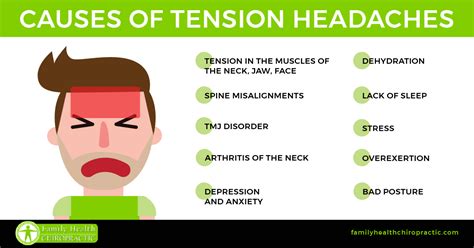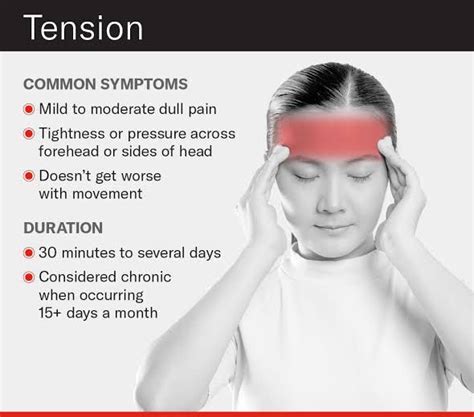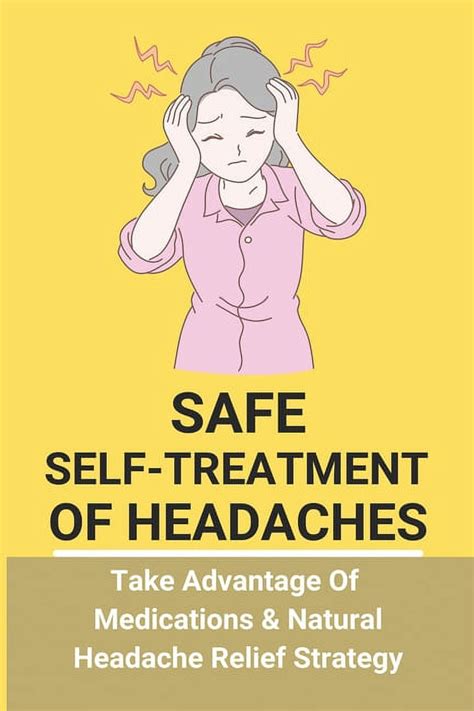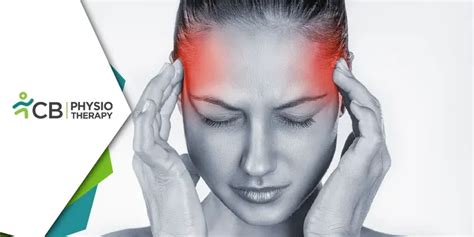Intro
Discover 5 key tension headache traits, including triggers, symptoms, and relief methods, to manage stress headaches, migraine headaches, and chronic headache pain, and learn about headache prevention techniques.
Tension headaches are one of the most common types of headaches, affecting millions of people worldwide. These headaches can be debilitating, impacting daily life and productivity. Understanding the characteristics of tension headaches is crucial for effective management and treatment. In this article, we will delve into the world of tension headaches, exploring their traits, causes, symptoms, and treatment options.
Tension headaches are often described as a mild to moderate pain, usually felt on both sides of the head. They can be triggered by various factors, including stress, poor posture, and muscle tension. The pain is typically dull and aching, feeling like a tight band or a squeezing sensation around the forehead, neck, and scalp. Tension headaches can be episodic or chronic, with some people experiencing them frequently, while others may have them occasionally.
The importance of understanding tension headache traits cannot be overstated. By recognizing the signs and symptoms, individuals can take proactive steps to prevent and manage these headaches. This knowledge can also help healthcare professionals develop effective treatment plans, reducing the burden of tension headaches on patients' lives. In the following sections, we will explore the key traits of tension headaches, including their causes, symptoms, and treatment options.
Causes of Tension Headaches

Symptoms of Tension Headaches

Treatment Options for Tension Headaches

Prevention Strategies for Tension Headaches

Managing Tension Headaches in Daily Life

Conclusion and Next Steps

What are the most common causes of tension headaches?
+Tension headaches are often caused by a combination of factors, including muscle tension, stress, and poor posture. Other potential triggers include lack of sleep, dehydration, hunger, and certain medications or substances.
How can I prevent tension headaches?
+Preventing tension headaches requires a combination of lifestyle changes and stress management techniques. Some effective strategies include maintaining a regular sleep schedule, engaging in regular exercise, eating a balanced diet, and managing stress through relaxation techniques.
What are the best treatment options for tension headaches?
+Treatment options for tension headaches include over-the-counter pain relievers, prescription medications, alternative therapies, and lifestyle changes. It's essential to work with a healthcare professional to determine the best course of treatment for individual needs.
We hope this article has provided valuable insights into the world of tension headaches. If you have any questions or comments, please don't hesitate to share them below. Your feedback is essential in helping us create informative and engaging content. Additionally, if you found this article helpful, please consider sharing it with others who may be struggling with tension headaches. Together, we can raise awareness and promote a better understanding of this common condition.
